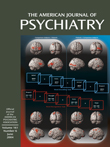A letter to the editor that appeared in the April issue of the Journal (Am J Psychiatry 2004; 161:759) contained errors that did not originate with the author. The corrected letter follows:
Sertraline and the Cheshire Cat in Geriatric Depression
To the Editor: The study by Lon S. Schneider, M.D., and associates
(1) on the treatment of geriatric depression with sertraline does not rank among the glories of clinical research. It does raise questions about corporate influence and “newspeak” in reporting clinical trials. The study is remarkable first for its size, determined a priori by a power analysis. The aim was to achieve power sufficient to detect a mean difference of 2 points in change scores on the 17-item Hamilton Depression Rating Scale. With a projected pooled standard deviation of 8 points, this difference would represent an effect size of only 0.25. Based on past trials, a sample of 700 cases was deemed necessary. The sample finally enrolled numbered 747—a stunning instance of excess to answer the straightforward question of whether sertraline is superior to placebo, especially considering the low bar that the drug was asked to clear. The study has all the hallmarks of an experimercial, a cost-is-no-object exercise driven by the corporate sponsor to create positive publicity for its product in a market niche.
The authors concluded that sertraline is superior to placebo. The difference in mean Hamilton depression scale change score in the key intent-to-treat group was 0.8 points, less than half the stated goal. This clinically trivial difference achieved statistical significance by virtue of the gargantuan sample size and because the pooled variance was less than the authors had assumed in the preliminary power analysis. “Statistically significant” differences on other dimensional primary outcome measures were likewise clinically trivial. Somewhat more encouraging data were obtained for the “completer” sample, but with 131 fewer cases, that sample was not representative of the drug’s performance in clinical settings. “Completer” data are no longer accepted as evidence of efficacy.
In the intent-to-treat sample, the authors further reported a “statistically significant” advantage for sertraline in a categorical measure of response, defined as a 50% reduction of Hamilton depression scale score (35% response rate for sertraline, 26% for placebo). This difference also is clinically trivial. It translates to a number needed to treat of 11. This means that clinicians would have to use sertraline 11 times to obtain one response that would not have occurred anyway with placebo
(2). In an earlier time, when antidepressant drugs first were developed, the drug-placebo difference in response rates averaged 30%–35%
(3,
4), based on which the number needed to treat was about three. Clearly, as reflected in this trial and elsewhere, there has been much dumbing down of expectations for antidepressant efficacy in recent years.
And where, by the way, are the data on remission? There is nowadays wide agreement that remission is the optimal indicator of antidepressant efficacy
(5). The authors withheld remission data. When challenged, they will doubtless use the procedural rationalization that remission was not specified a priori as an outcome measure. The question must be, why not? By this fig leaf they conceal clinically relevant data that would probably reflect poorly on the putative efficacy of sertraline. This technique allows the authors to present their results with the best “spin.” Thus does the corporate mandate to put lipstick on the pig prevail over the academic duty to communicate independent analyses of the data
(6–
8) The
Journal is complicit in this scientific failure.
The authors also failed to emphasize in the abstract (where the most readers would notice it) that none of the functional or quality-of-life outcome measures favored sertraline over placebo. Something has changed in our conceptual paradigm when a drug can be described as “effective” for depression but the patients do not endorse that their lives are any better with respect to vitality or social functioning or emotional role functioning or mental health. Like the Cheshire cat’s smile, the only evidence that sertraline was there is the disbembodied p value, grinning in statistical space, with no connection to clinical reality. That is not quite what Percy Bridgman had in mind when he introduced operationalism in science. Lewis Carroll, on the other hand, would have appreciated the irony.

